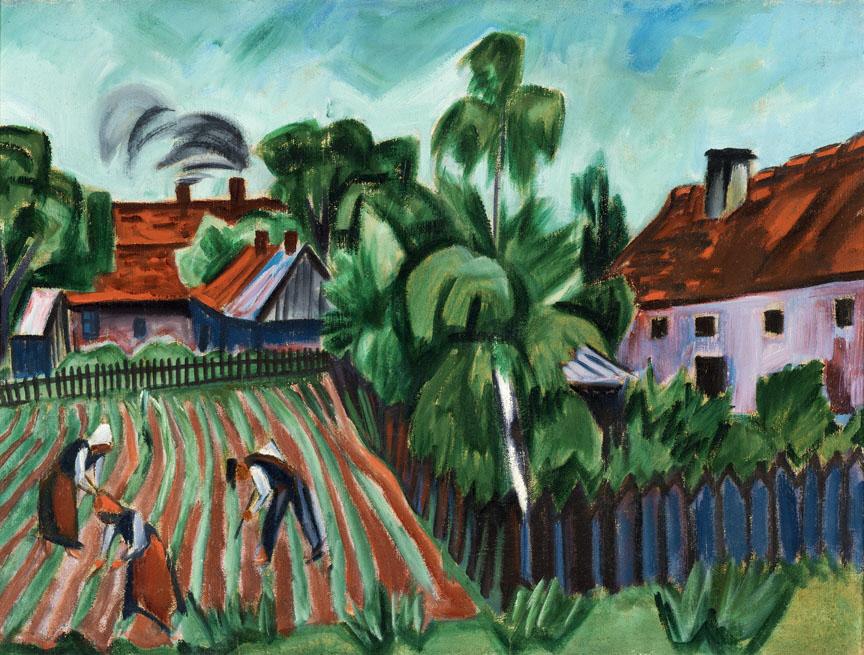In 1906 Pechstein joined the Dresden-based artists' group Die Brücke (The Bridge). The Brücke artists were influenced by the expressive, highly coloured paintings of the Fauves in Paris. They were also interested in African and Oceanic tribal art and introduced so-called 'primitive' motifs to their paintings and woodcut prints.
In 1914 Pechstein emulated the visits that Paul Gauguin made to Tahiti in the 1890s by travelling to the Palau Islands in the Pacific. There he studied native carvings and paintings and further developed his characteristic flat angular style of painting.
Pechstein came to regard the remote village of Nidden as an idyllic retreat from modern industrialised society. In this painting the fishermen are not depicted as individuals but are stylised in a neo-romantic manner to form a community united through work and nature. Pechstein effectively draws upon his long-standing interests in native folk life, tribal art and Fauve colour to create an Expressionist vision of rural harmony.




